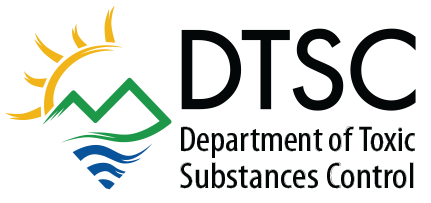Scoping Meeting Quick Reference Guide
The purpose of an initial scoping meeting is for the California Department of Toxic Substances Control (DTSC), the party with whom DTSC is entering into an agreement (Proponent), and the Proponent’s environmental consultant to discuss project objectives.
The following elements may be addressed during the scoping meeting:
- Project Objectives: Redevelopment plans, real estate transactions, environmental conditions, etc.
- Schedule and Funding Needs: Proponent’s deadlines that may be affected by assessment, investigation, or cleanup of the property.
- Property History: Ownership, historic operations and land use; chemical use; regulatory status; permits; prior assessments; investigations; cleanup or mitigation; etc.
- Property Details: Size, location, geology, lithology, hydrogeology; known/potential hazardous substance releases; areas of concern; contaminants of concern; historic sampling locations and results; data gaps; risk assessments; off-site concerns; etc.
- Data Quality Objectives and Remedial Action Objectives: Discussion of data quality objectives to ensure that appropriate data of sufficient quality is collected to facilitate decision-making; discussion of potential cleanup goals and objectives.
- Risk Assessment: Evaluation of the use of published screening levels or site-specific risk assessments, risk management, and risk communication strategies.

- Conceptual Site Model (CSM): Discussion of the relationship between contaminant sources and receptors through migration and exposure paths. Helps identify data gaps and focus data collection efforts. Updated as new information is collected throughout the project.
- California Environmental Quality Act (CEQA) Requirements: Identification of existing CEQA documents and project requirements and how to integrate CEQA needs within the overall project.
- Public Participation Requirements: Discussion of previous outreach activities, public/tribal interest, and current perceptions in the community, as well as DTSC’s community involvement and public outreach process, methods, and schedule.
- Project Schedule: Agreed-upon submittal and review dates and timelines for Work Plans and other key documents; development of optimal sequencing of activities to efficiently reach project goals.
- Available Resources: Policies and procedures; sample documents, checklists, and other resources available.
- Exit Strategy and Closure: Proposed future land use; property acquisition and construction dates; funding limitations or requirements; approval for site occupancy, etc. to ensure alignment of stakeholder and DTSC goals.
- Action Items: Proponent or environmental consultant should provide action items to DTSC for review and concurrence, or the DTSC Project Manager may elect to prepare a meeting summary to document key decisions.
For more information, contact Maryam.Tasnif-Abbasi@dtsc.ca.gov.
Download a collection of all DTSC Voluntary Agreements Quick Reference Guides
Download PDF version of this diagram.
This document is intended to be guidance only and it does not supersede or implement laws or regulations. The information in this advisory is intended solely as guidance and as educational reference material and should not be considered enforceable or regulatory in nature.

Brownfields Links
Scoping Meeting PDFs
Site Mitigation & Restoration Program Links
- Brownfields
- Cleanup in Vulnerable Communities Initiative (CVCI)
- EnviroStor
- Exide
- Human and Ecological Risk Office
- Lead-Acid Battery Recycling Facility Investigation and Cleanup Program
- Loans & Grants
- Land Use Restriction Sites
- Santa Susana Field Laboratory
- School Sites
- Sea Level Rise
- State Superfund Program
- Strategic Plan and Program Enhancement Work Plan
- Vapor Intrusion
- Contact Information
Site Mitigation & Restoration Program Related Links
Connect / Contact Us
Office Locations / Map
Sign up for an E-List
Regulatory Assistance Officers
Statewide Campaigns/Alerts
Report an Environmental Concern
Amber Alert
California Grants Portal
Register to Vote
Save Our Water.com





 Katherine M. Butler, MPH
Katherine M. Butler, MPH